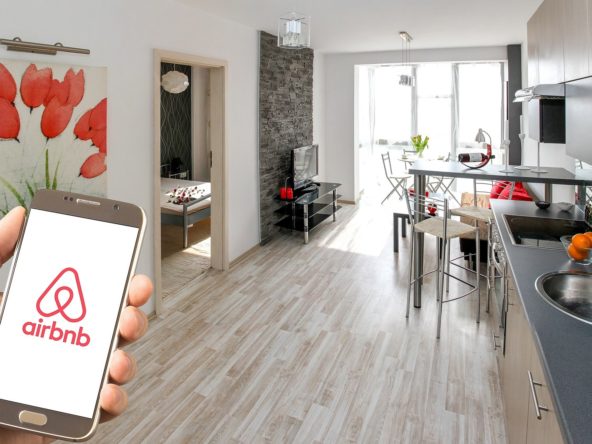The multi-let property investment strategy is a popular investment approach that has gained significant momentum in South Africa over recent years. This investment strategy involves purchasing a single property, dividing it into multiple rental units, and then renting it out to different tenants.
The primary goal of the multilet strategy is to generate a steady stream of rental income that can be used to offset the costs of owning and managing the property, and also provide a long-term return on investment. This investment strategy is particularly attractive in South Africa, where there is a high demand for affordable rental properties.
If you are interested in learning about the multi-let property investment strategy and how it can be used to build wealth in South Africa, this article will provide you with a comprehensive overview of the strategy, its benefits, and factors to consider when evaluating a multilet property deal. Additionally, we will provide an example financial feasibility analysis, to help you understand the potential profitability of a multi-let property deal.
What is a Multi-let Property Investment Strategy
The multi-let property investment strategy is a property investment approach that involves the purchase of a single property that is then subdivided into multiple rental units or rooms, and rented out to different tenants.
A practical example of a multilet property investment deal could be the purchase of a large house with 5 bedrooms, which is then subdivided into 5 individual rental units with each unit having its own bathroom, kitchenette, and living area. These units can then be rented out to different tenants, generating rental income that can offset the cost of owning and managing the property.
Another example is the purchase of a commercial property, which is then subdivided into multiple office spaces that can be rented out to different businesses.
The multilet strategy can also be applied to student housing, where a single property is converted into multiple student units with shared facilities such as a kitchen and living area. This is a popular investment approach in South Africa, where there is a high demand for affordable student housing.
Benefits of The Multi-let Property Investment Strategy
There are several benefits of multilet property investments that make them attractive to property investors. Below are some of the key benefits of this investment approach as compared to other property investment strategies:
Higher rental income
The primary benefit of the multilet property investment strategy is the potential for higher rental income. By dividing a single property into multiple rental units, investors can generate more rental income than they would with a single-unit property. This can help to offset the cost of owning and managing the property and provide a steady stream of cash flow.
Lower vacancy rate
Another advantage of multilet properties is that they are less likely to experience vacancies than single-unit properties. If one unit is vacant, there are still other units generating rental income, which helps to reduce the risk of cash flow interruptions.
Reduced risk
Multilet properties also provide investors with reduced risk. With multiple tenants, there is less reliance on a single tenant to generate rental income, which helps to spread the risk of rental income interruptions due to tenant vacancies, non-payment, or other unforeseen events.
Property value appreciation
As with other property investment strategies, multilet properties have the potential to appreciate in value over time. The added value of multiple rental units can increase the overall property value and attract more potential buyers.
Disadvantages Of The Multi-let Property Investment Strategy
While multi-let property investments can offer numerous benefits, there are also some potential disadvantages to consider, including:
Higher management and maintenance requirements
Managing and maintaining multiple rental units can be more time-consuming and costly than managing a single-unit property. This includes things like repairs, maintenance, tenant screening, and rent collection.
Tenant turnover
Multiple units can also mean more frequent tenant turnover, which can result in additional expenses such as cleaning, repairs, and tenant acquisition costs.
Higher initial investment
Multilet properties often require a larger initial investment, which may be a barrier for some investors. This is because you have to spend money sub-dividing the property into multiple sections to accommodate more tenants.
Potential for complex legal and regulatory requirements
With multiple units, there may be more complex legal and regulatory requirements, such as zoning laws and building codes, that need to be adhered to. This is not always the case but it’s good to be aware of it and investigate it during your due diligence of the property.
Factors To Consider When Evaluating A Multi-let Property Deal
When evaluating a multilet property deal, there are several factors that you should consider. These factors include:
Location
The location of the property is one of the most important factors to consider when evaluating a multilet property deal. The property should be located in an area with high rental demand, good infrastructure, and amenities such as schools, shops, and public transportation. For example, a multilet property located near a university or college may attract more student tenants, while a property located in a central business district may attract more business tenants.
Property condition
The condition of the property is another crucial factor to consider when evaluating a multilet property deal. Investors should assess the property’s structural integrity, electrical, and plumbing systems, as well as the general condition of the property. Properties that require extensive repairs or renovations may not be a good investment, as they can be costly and time-consuming.
Potential rental income
The potential rental income is a key consideration when evaluating a multilet property deal. Investors should research the rental rates in the area and compare them to the rental rates of similar properties in the same location. For example, a multilet property with four bedrooms in a particular location may generate higher rental income than a three-bedroom property in the same area.
Tenant profile
Investors should consider the tenant profile when evaluating a multilet property deal. They should assess the demand for rental properties in the area and the target market for the property. For example, if the property is located near a university, the target market may be students, while a property located in a family-oriented neighborhood may attract families as tenants.

Financing options
You should also consider your financing options when evaluating a multilet property deal. Assess the bond rates and loan terms offered by different banks and financial institutions, and choose the most favorable option that suits your investment objectives.
In addition to traditional financing options like the bank, there are also several non-traditional capital sources that you could consider when evaluating your deal. Some of these options include:
Crowdfunding:
Crowdfunding platforms allow multiple investors to pool their money together to finance a property purchase. This can be an effective way to access capital without the need for a large down payment or traditional bank financing. However, you should be aware of the risks associated with crowdfunding, including the potential for fraud and the lack of regulatory oversight.
Private money lenders:
Private money lenders are individuals or companies that provide short-term loans to investors in exchange for a higher interest rate than traditional bank loans. These loans can be used to finance a property purchase or renovations. However, as an investor you should be aware of the higher interest rates and shorter loan terms associated with private money lenders.
Seller financing:
Seller financing is a type of financing where the seller of the property provides the financing for the purchase. This can be an attractive option for investors who may not qualify for traditional bank financing or who want to avoid the stringent requirements of traditional financing options.
Joint ventures:
Joint ventures are partnerships between investors and other individuals or companies to purchase and manage a property. This can be an effective way to access capital and share the risks and rewards of a multilet property investment. If you choose this route, be sure to get clear legal agreements drawn up and keep in mind the potential for disagreements among partners.
Financial Feasibility Analysis for a Multi-let Property Deal
Performing a financial feasibility analysis is an essential step when evaluating a multilet property investment. The purpose of this analysis is to determine whether the property is a viable investment opportunity and to assess its potential return on investment.
In this section, I will provide a detailed overview of the financial feasibility analysis process for a multilet property deal, including an example deal.
Step 1: Negotiate The Purchase Price
The first step in the financial feasibility analysis process is to negotiate the purchase price of the property. This can be done by conducting a property valuation analysis based on the expected income and then negotiating a price with the seller. For example, let’s say that we are considering purchasing a multilet property in Johannesburg and negotiate a purchase price of R2,500,000.
Step 2: Estimate The Renovation and Legal Costs
With a multi-let property you will more than likely have to renovate it and sub-divide the home into multiple living units. Using the services of an architect you can get an idea of the design and expected refurb costs. For purpose of this example let’s assume your cost to renovate is R500,000 (including all legal fees). This brings the total estimated costs to R3m.
Step 3: Determine the Rental Income
The next step is to determine the potential rental income of the property once it is fully let as a multi-let property. This can be done by researching the rental rates in the area and assessing the rental income potential of the property. For example, let’s say that our multi-let property has four units, each with a potential monthly rental income of R10,000. So you can generate a total potential rental of R40,000pm gross.
Step 4: Estimate A Vacancy Rate
Estimate a vacancy rate for the property, which takes into account that during the year you will likely have months where some units are vacant. It is prudent to use a percentage of around 3% to 5% for residential property. This will thus equal R16,800 if we assume a 3.5% vacancy rate (R40,000 gross rent x 0.035 x 12)
Step 5: Determine the Operating Expenses
The next step is to determine the operating expenses associated with the property. This includes expenses such as property taxes, insurance, maintenance, repairs, and management fees. For example, let’s say that our multi-let property has the following operating expenses:
- Rates and taxes: ZAR 20,000 per year
- Insurance: ZAR 10,000 per year
- Maintenance and repairs: ZAR 15,000 per year
- Management fees: ZAR 33,600 per year
- Security: R6,000
Thus total operating expenses in this example is R84,600 per year.
Step 6: Calculate the Net Operating Income
The net operating income (NOI) is calculated by subtracting the vacancy rate and the operating expenses from the gross rental income. For example, let’s calculate the NOI for our multilet property:
Monthly rental income: R 10,000 x 4 units = R 40,000
Annual rental income: R 40,000 x 12 months = R 480,000
Total operating expenses: R 20,000 + R 10,000 + R 15,000 + R 33,600 + R6,000 = ZAR 84,600
Net operating income: R 480,000 – R 84,600 = R 395,400
Step 7: Calculate the Yield
The yield is a measure of the property’s potential return on investment. It is calculated by dividing the net operating income by the purchase price of the property. For example, let’s calculate the cap yield for our multilet property:
Cap rate = Net operating income / Purchase price
Cap rate = ZAR 395,400 / ZAR 3,000,000 = 13.18%
In the property market, most investors would consider a yield over 12% to be very good. If the yield was lower, say 8%, you might want to then negotiate a lower price with the Seller to improve your yield. In this example however it would generally be considered a deal worth pursuing.
Performing a financial feasibility analysis for a multilet property deal can be complex and time-consuming, but it is essential for making informed investment decisions. By carefully evaluating the purchase price, refurbishment costs, rental income, vacancy rate, operating expenses and the nett yield, you can determine whether a multilet property is a viable investment opportunity that aligns with your investment goals and risk tolerance.
Conclusion: Multi-let Property Investment Strategy
In conclusion, multilet property investment can be a lucrative investment strategy for those looking to generate passive income and build long-term wealth. The benefits of investing in multilet properties include higher rental income potential, diversification of rental income streams, and increased cash flow.
If you decide to pursue a multilet property investment, it’s crucial to work with experienced professionals such as real estate agents, architects, townplanners (where applicable), property managers, and attorneys to guide you through the process. With a comprehensive understanding of the financial analysis, property condition, and local market, you can make informed investment decisions that align with your investment goals.
Investing in multilet properties requires careful planning, analysis, and due diligence, but it can offer significant benefits in terms of generating passive income and building long-term wealth. By following the steps outlined in this article, you can evaluate multilet property deals with confidence and make informed investment decisions.
Aslam


Aslam is from Johannesburg, South Africa and graduated with a BComm degree from the University of South Africa and followed that up with a BComm Hons degree in Finance and Investments.
He has spent over 18 years in the financial services sector, with 12.5 years in the commercial property finance arena with 3 of the major banks in the country.
His specialty being deal structuring and finance solutions for commercial property investors and developers across the commercial property sector, including large scale retail developments, high density residential investments , industrial and office property.
Aslam was also a fast food franchise investor for 7 years, is experienced in digital marketing and online lead generation and has owned and managed multiple residential properties.





